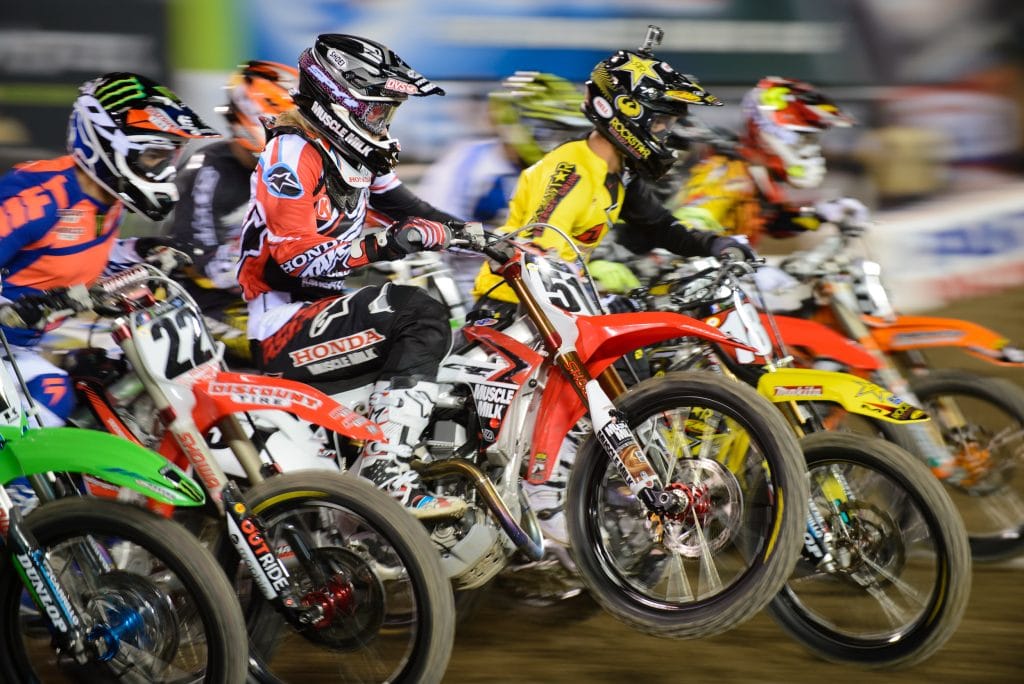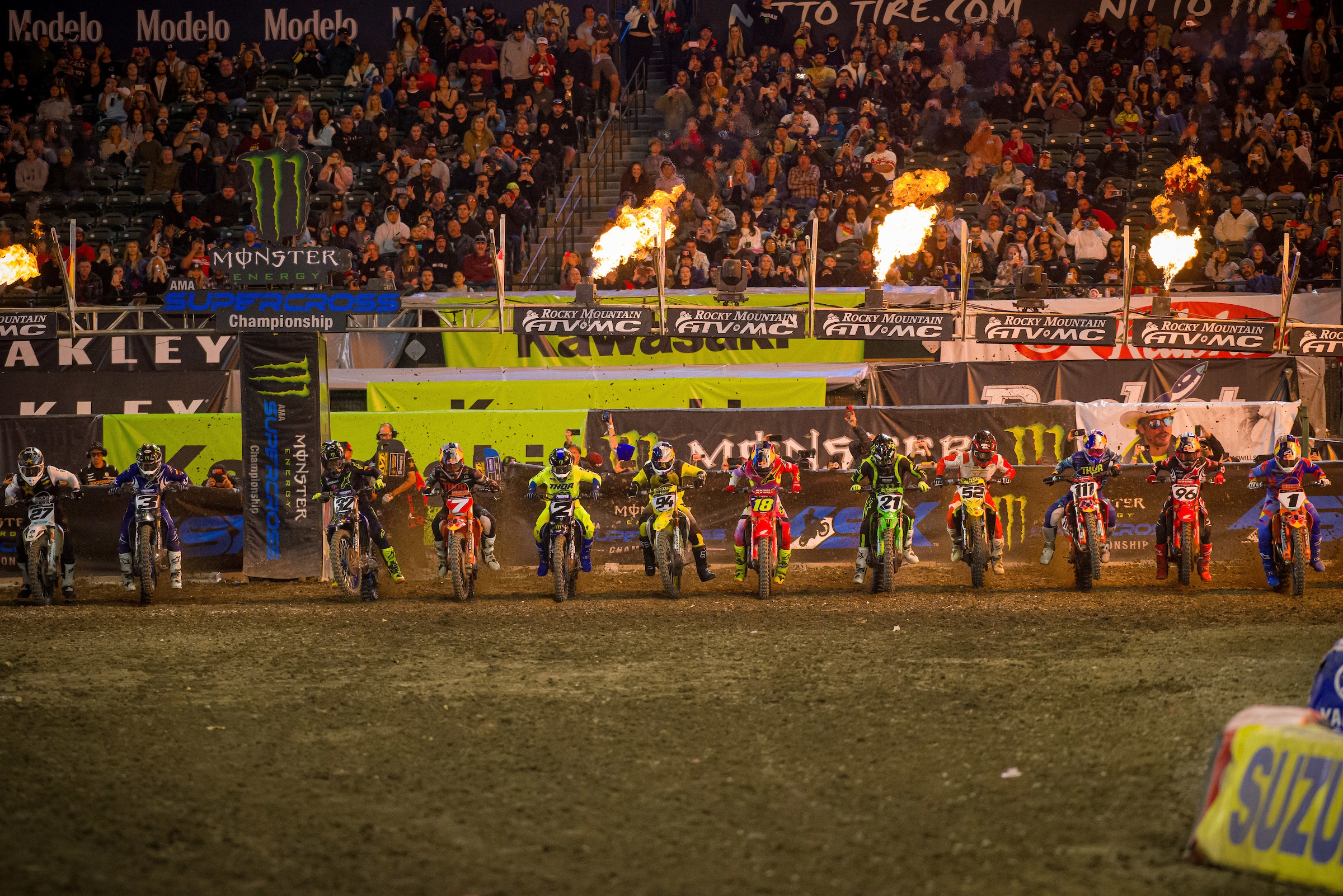
So, this upcoming week the Supercross series is heading back to Anaheim for their third stop of the 2022 season, at the home of the California Angels baseball team. A3 is such a weird race. Everyone’s already been there twice, it’s starting to seem routine, and most are ready to move on to somewhere new. It’s the same with the crowds. After a full house at A1, the crowds are usually down by A2 and even lower by A3. I guess Feld gets a good deal on renting the stadium for so long so that’s why a lot of years we get three stops in Anaheim.
It’s not a race I’ve attended a lot, because by then, I’m usually ready to head home, and I was almost going to skip it and choose something different to write about this week when I came across this start image from 2013 and it gave me an idea to write about a photographic technique that I like to use sometimes at the races – the Pan shot.
Most of the time when shooting action shots, the goal is to get the photo sharp and crisp. This means shooting at relatively fast shutter speeds – ie: above 1/1000 of a second. This freezes the bike and rider and usually looks the best. But, because photography is a frozen moment in time, the image doesn’t always convey the speed that bikes are moving at. So, I always take some time each race to slow the shutter down and try to do some pan shots.
What’s a pan shot? Well, slowing the shutter speed down increases how long the shutter is open when you take the photo. So, a slower shutter allows more light into the camera but it also causes more blur in a moving object. Not a good thing when trying to shoot a dirt bike, but, if you can follow the bike’s motion with the camera while taking a picture at the slower shutter speed, you can match the speed of the bike enough to ensure that it stays sharp and the background blurs. This look helps convey that the bike is moving through the scene and not just static.

Pan shots are tough. They’re definitely easier on the roadside of things because the ground the bikes are traveling on is smooth. Unfortunately, with moto, not only is the bike moving across your frame, it’s bouncing up and down as it hits bumps and jumps, making it tough to get it perfectly sharp. I usually try to take some time each race day to attempt some pan photos. I try to find somewhere relatively smooth to use the technique and it’s by far the lowest percentage type of photo that I take. If I shoot a couple of hundred pan shots, I’m lucky to get 3 or 4 that are useably sharp. But, the ones that work out make the rest of the duds worth it.
This shot was from the start of the race at Anaheim. I like shooting pans on start photos because the start straight is usually pretty flat, and you’re shooting through other bikes, which gives depth to the image. Here, Justin Barcia gets a little wheelie going as he leaves the line, which helps him stand out from the pack even more. It’s a shot that always stood out to me, probably for that reason. Technically wise, this image was shot at 1/125th of a second. Slower shutter speeds than this can exaggerate the effect even more, but I find 1/125th to be the sweet spot for moto to still have the bike and rider decently sharp.





